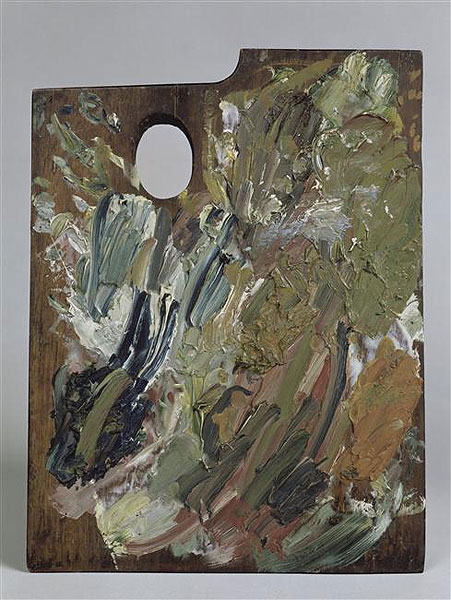Van Gogh’s palette
Van Gogh’s palette
Why preserve an artist’s palette? The daubs of raw pigment or the mixes left in position can be an intriguing index to the working method and the mind of the artist. And most, once the status of art had been elevated above the realms of mere craft, would paint themselves palette in hand.
Where and how colour is laid can convey emotion, psychology, religious significance. “The whole value of what you are about” wrote John Ruskin in his Elements of Drawing, first published in 1857 “depends on colour. If the colour is wrong, everything is wrong: just as, if you are singing, and sing false notes, it does not matter how true your words are.”
In a letter to his brother Theo in 1882, Van Gogh wrote: “There are but three fundamental colours – red, yellow, and blue; ‘composites’ are orange, green, and purple. By adding black and some white one gets the endless varieties of greys – red grey, yellow-grey, blue-grey, green-grey,orange-grey, violet-grey. It is impossible to say, for instance, how many green-greys there are; there is an endless variety. But the whole chemistry of colours is not more complicated than those few simple rules. And having a clear notion of this is worth more than 70 different colours of paint — because with those three principal colours and black and white, one can make more than 70 tones and varieties. The colourist is the person who knows at once how to analyze a colour, when it sees it in nature, and can say, for instance: that green-grey is yellow with black and blue, etc. In other words, someone who knows how to find the grays of nature on their palette“.



This Post Has 0 Comments